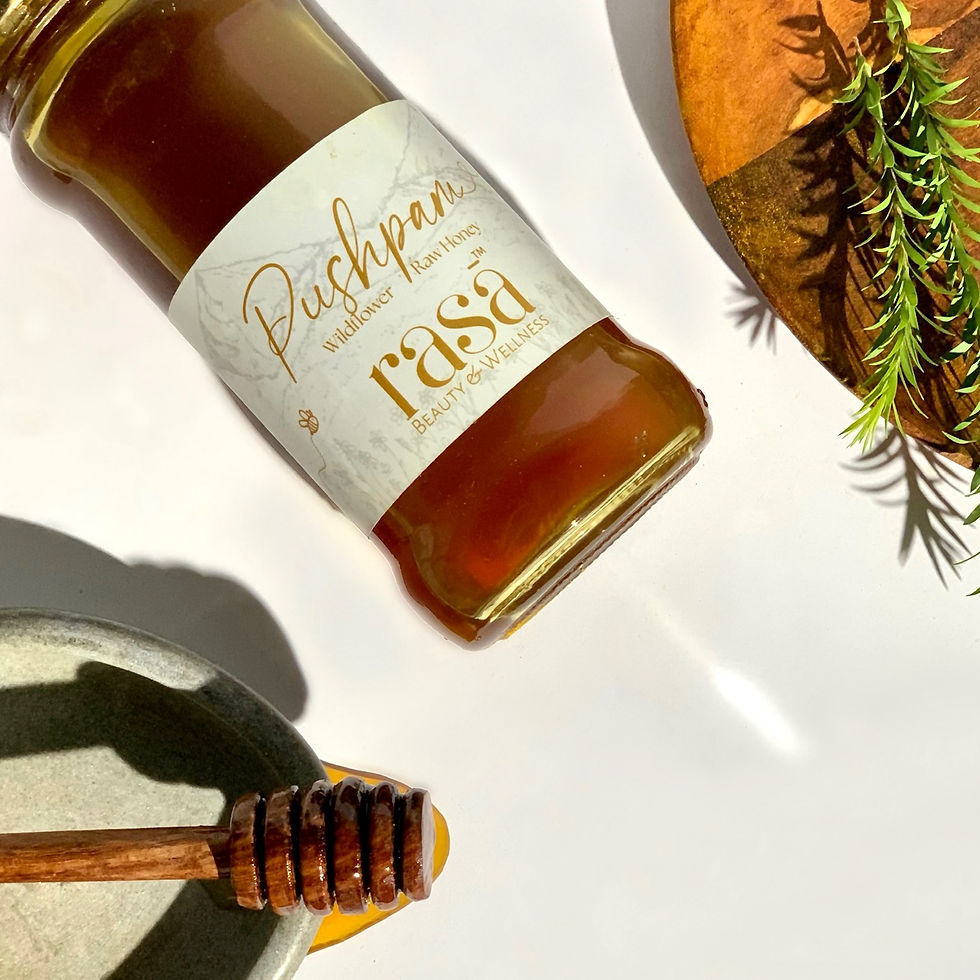In our opinion there is no such thing as “organic honey”, rather it is simply clever marketing tactics. We can’t control where the bees fly, but we can be convoys & smart in selecting location sources.
All our beekeepers use natural, traditional processes without the use of harmful pesticides and all hive locations are based in remote areas far from sources of pollution or commercial farms.
Our honey varieties are unblended and sourced directly from our team of individual beekeepers that maintain their own hives and bees, therefore our first-hand observation & the ethos plus good farming practices of our beekeepers clarifies that the honey is as close to organic or natural as one can get.
When you buy our honey’s you support the local Indian bees and also get amazing honey.
About our Honey
Our limited-edition unpasteurised honey varieties are sourced directly from honeycombs located just outside forest perimeters. Upon seasonal collection our beekeepers utilise coarse filters to remove small bits of debris, as the honey is not pasteurised (heated). This allows us to retain all the medicinal properties & natural bio products such as the beneficial beeswax, bee propolis, bee pollen, beneficial, enzymes, amino acids & antioxidants.
Honey, the transporter, induces leukocytes to release cytokines, which help in repairing
damaged tissues. It contains a high level of antioxidant properties which in turn help to build the human immune system. It is antibacterial & anti-fungal, contains hydrogen peroxide,
which is a natural antiseptic, it can kill unwanted bacteria & fungus. It is a phytonutrient powerhouse, as it is a potent prebiotic that nourishes the good bacteria within the intestines, thereby aids in treating digestive issues.
Honey is a natural preservative & catalytic carrier of healing medicines that helps to improve
their efficacy & draw them deeper into the tissues, supporting their swift absorption into circulation. The seasonal flower blooms & biodiversity directly influences the taste and medicinal properties.
Most store-bought honey, is pasteurised. This means that honey is put under high heat to improve its shelf
life and appearance. Pasteurisation strips away many of the nutrients & medicinal properties from the product.
Compared to pasteurised honey, only
raw-unprocessed honey & the honeycomb have huge potential to enhance the gut microbiome, mitigating the spread of harmful bacteria and encouraging the growth of necessary gut bacteria.

A large percentage of our farming community is made up of small farmers and therefore the Mellifera is not the ideal bee for them due to several facts such as these bees tend to scatter and abscond because there isn’t enough flora for them.
The indigenous bees will not pollinate areas where the western bees are located and tend to stay in a small area, this is a benefit when the honey is collected from an area of rich biodiversity as this tells us that the nectar and pollen will be distinct to the region.
This translates into a nutrient rich honey, positive conservation of domestic flora and herbs that are on the endangered list, amongst the long list
of benefits to the farmer & landscape.
What's in a Bee?
Apis Mellifera, a European import species of bee, introduced into the Indian honey industry in the year 1983 produces 75% of domestic honey.
The Western bee can produce anywhere between 20 kg & 40 kg of honey per colony per year, as compared to the indigenous Apis Cerana with a relatively low output of 7 kg to 10 kg. There are many drawbacks when comparing the benefits to the farmer and biodiversity. Simply put, the Mellifera species versus the indigenous Cerena is much like revisiting the jersey cow vs the Indian cow debate. These bees require a lot of flora, so monoculture farming & commercial apiculture is preferred, which practises migratory beekeeping — where 700-800 boxes are moved from place to place, throughout India.
For the farmer the western bee has a lot of drawbacks such as it’s absconding behaviour and studies have shown that the species requires a lot of maintenance and tends to carry pathogens.
Moving beyond the “productivist agenda” to concentrate on the bees’ most important function — maintaining ecological balance and helping agriculture through cross-pollination — is how we can bring
the conversation back to our local foragers.
“Indigenous bees have evolved in this region, they know the plants, the terrain, and are better able to adapt to the changes in the environment.
Over the years, we travelled to many locations to observe first hand, the traditional culture of honey collection and to better understand the various types of bees, their flower of choice and the medicinal properties of the resulting honey. Some of the locations that we chose to carefully shortlist is comprised of areas located within the Himalayan mountains; the valleys of Kashmir & just outside the Nanda Devi biosphere located in Uttarakhand.
“STUDYING THE BEHAVIOUR OF BEES IS IMPORTANT. DID YOU KNOW THAT THE CERENA DOESN'T TRAVEL MORE THAN 700 M, OR THAT IF THERE IS
PADDY FIELD IN THE WAY, THEY ARE UNWILLING TO CROSS IT?
ALL THIS IS IMPORTANT IN TERMS OF CONSERVATION OF BEES AND ADDRESSING POLLINATION AS AN ECOSYSTEM SERVICE”
HEMA SOMANATHAN, IISER THIRUVANANTHAPURAM, GROUP LEADER OF BEE LAB



